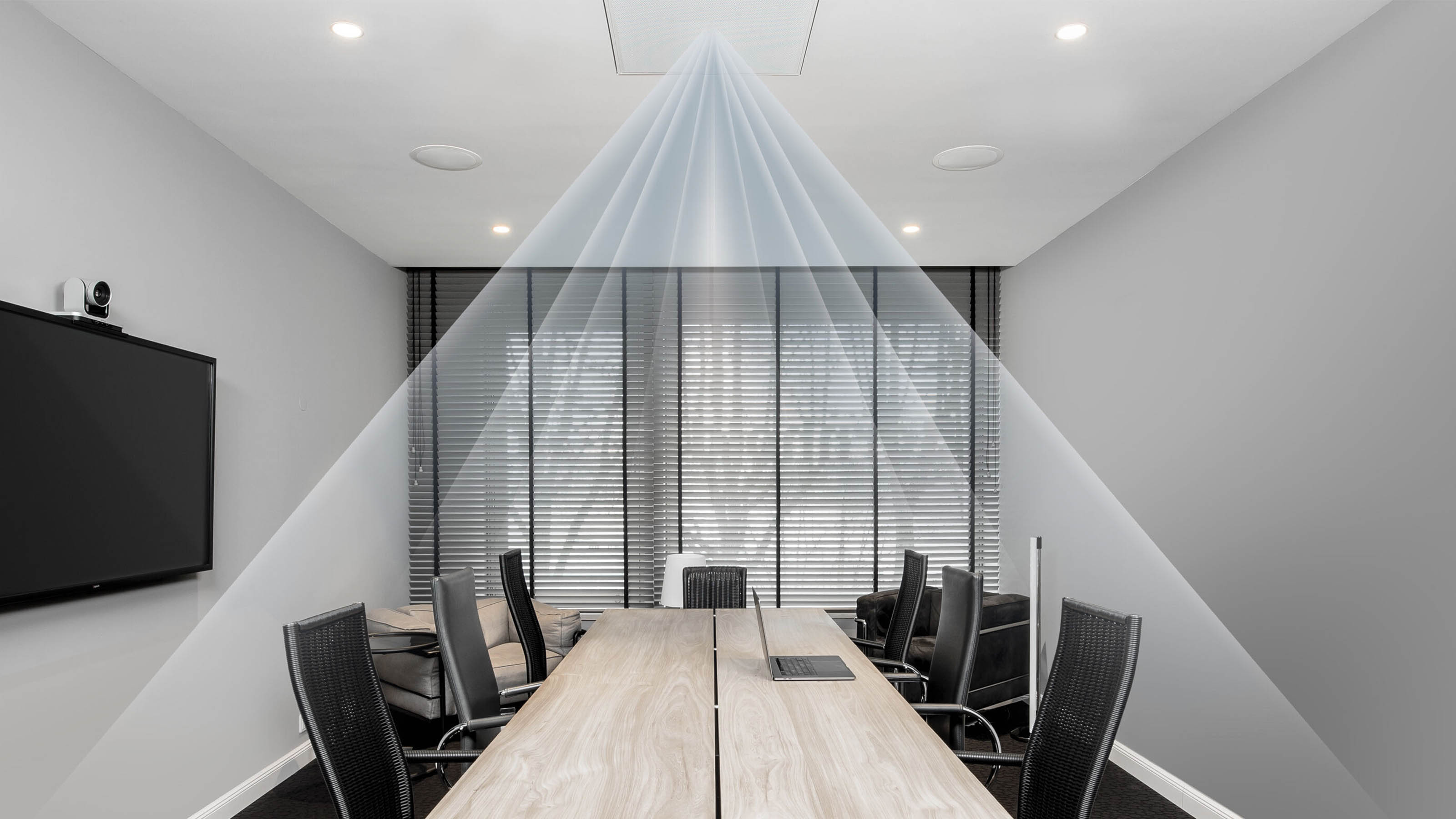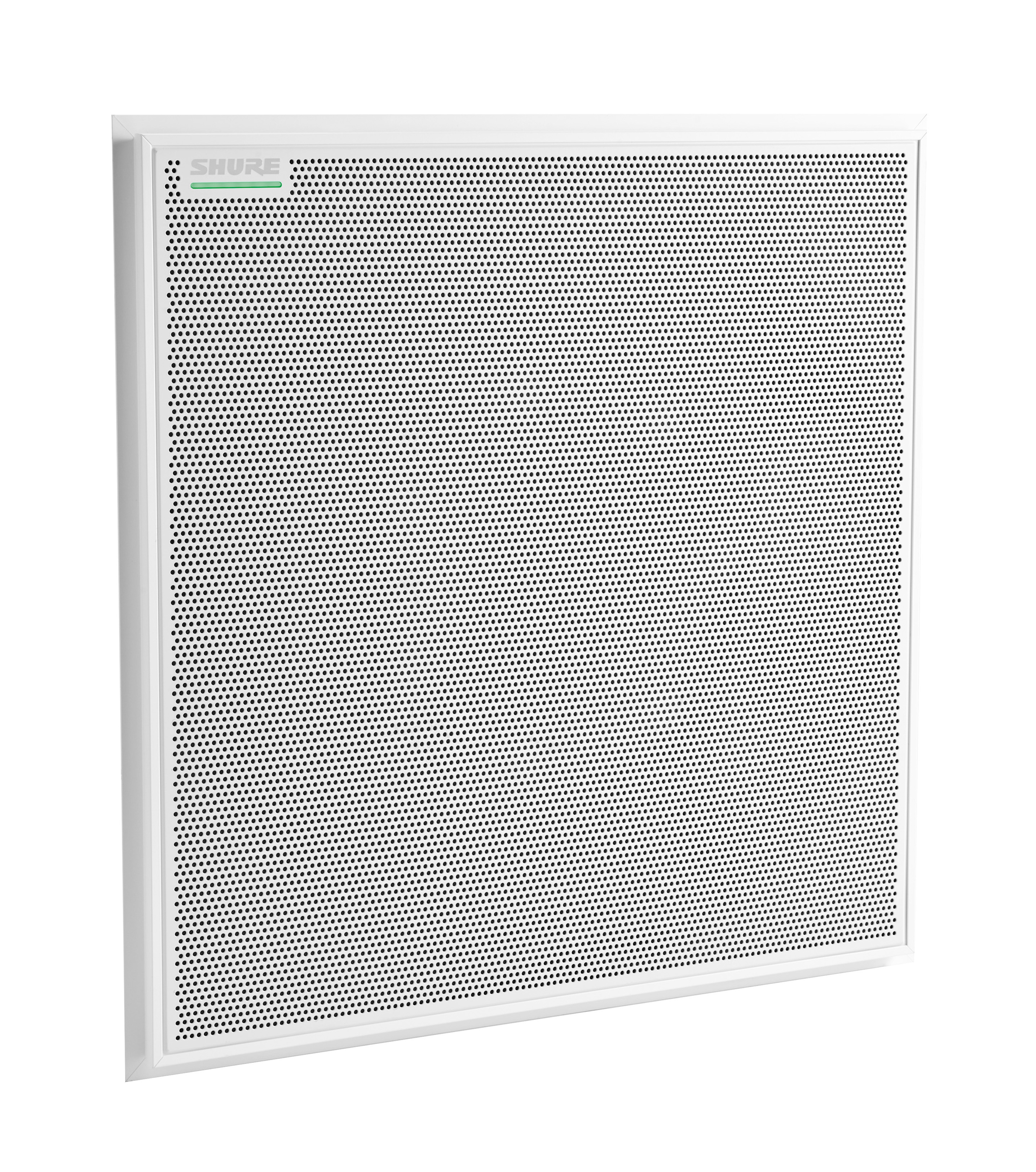Voices Carry
Beamforming technology helps everyone in a conference room be heard. But how does it work?

Beamforming technology describes the way in which the spatial response of any wave-based propagation is manipulated. It can be used across RF applications, lighting applications, and, in our case, acoustic applications. Beamforming technology helps manage the directionality of various sound behaviors to ensure the acoustic waves are pointing in the intended direction—and not pointing where it is not intended.

At Shure, we employ beamforming technologies across countless audio devices and microphones to ensure voices can connect regardless of location in a room or conferencing space. Here's how to use beamforming technology to enable better communication within your organization.
Technology Evolution
Beamforming technology can be implemented in several ways—geometrically, physically, in the analog signal domain, and with digital signal processing (DSP). Geometrically, beamforming is attained using the shape of the object. Physically, it’s done with an interference tube and a single condenser microphone. In the analog signal domain, beamforming is realized using analog signal processing and solid-state components, resistors, capacitors, and conductors. We use DSP to achieve beamforming in our Microflex Advance portfolio of ceiling, wall, and table array microphones (including the newly launched MXA902 integrated ceiling array microphone and loudspeaker), and that’s accomplished with many signals that are manipulated to manage directionality in a conference room or other space.

Today, you tend to see beamforming technology with DSP. Physical, interference tube beamforming is mostly seen today in shotgun microphones, but the industry is largely moving away from the physical domain and toward digital with DSP architecture and processing blocks that enable the manipulation of signals for communication.
With DSP-based beamforming technology, the directivity of the microphone can be changed dynamically without altering the physical position of the microphone. It is simple to notice a difference when using an array microphone versus a shotgun microphone. With a shotgun microphone, you must physically point it in various directions to pick up sound.
With an array microphone integrating DSP-based beamforming technology, you can alter the processing program to point to the area of highest sensitivity in one area of a room, while still managing the areas of lowest sensitivity in other parts of the room. The DSP-based technology enables the microphones to seamlessly adjust to pick up the necessary pieces of conversation and determine the areas of highest sensitivity that require manipulation.
Beamforming Benefits
Beamforming technology is optimized in a situation where there are various speakers whose voices must be heard, such as a conference room or office meeting space. It provides the ability to direct the intended area of pickup to a specific speaker or area of the room, while lowering the sensitivity in other positions in the room. This ensures speakers in certain areas of a room are highly intelligible, while other noises are minimized.
A daily selection of the top stories for AV integrators, resellers and consultants. Sign up below.
In reverberant spaces, like a large conference hall or presentation space, beamforming technology can isolate direct sound. As a result, it blocks out the reflected energy and noise circulating around the room for a clear conversation. In larger rooms, beamforming technology can reduce noise and assist with noise isolation. It minimizes air handling and stationary noise in the signal chain to increase intelligibility.
With DSP-based beamforming technology, the directivity of the microphone can be changed dynamically without altering the physical position of the microphone.
Beamforming technology also results in a more aesthetically pleasing environment. While traditional single-element microphones may be peppered around a conference room or scattered across a surface, beamforming technology allows you to remove the microphones from the tables and still maintain high levels of intelligibility.
Devices with beamforming technology are well suited for a number of environments. We have mentioned use in conferencing and office spaces, as well as larger reverberant spaces filled with hard surfaces. Classrooms prove to be another prime use for beamforming technology, as classroom spaces are often large and require isolated voices. Students want to clearly hear a teacher at the front of the room, and the teacher needs the ability to easily pick up voices in the back of the room.
Whether integrating into a classroom or a meeting room, beamforming technology allows you to isolate the voices of individual speakers and form a room response that directs the sound or audio to the intended listener.
As we continue developing devices with beamforming technology, we constantly come across new use cases. There are still areas, of course, where we don’t recommend beamforming technology, as it won’t be as effective as intended. For example, the technology doesn’t perform best in high sound pressure level (SPL) environments where it will interfere with linearity, such as a large sports arena. We also tend to not recommend beamforming technology for studio recording use, as that is a scenario where you want the true-to-life, uncolored sound.
[Q&A: Environmentally Friendly Packaging Part of Shure Sustainability Efforts]
While certain scenarios are not always ideal for beamforming technology, it is inspiring to see how the technology comes to life across new applications. Shure launched its MXA910 beamforming ceiling array microphone in 2016, and several years since that initial innovation, beamforming technology continues to evolve for use across applications.
Ken Platz is the director of acoustics at Shure.

